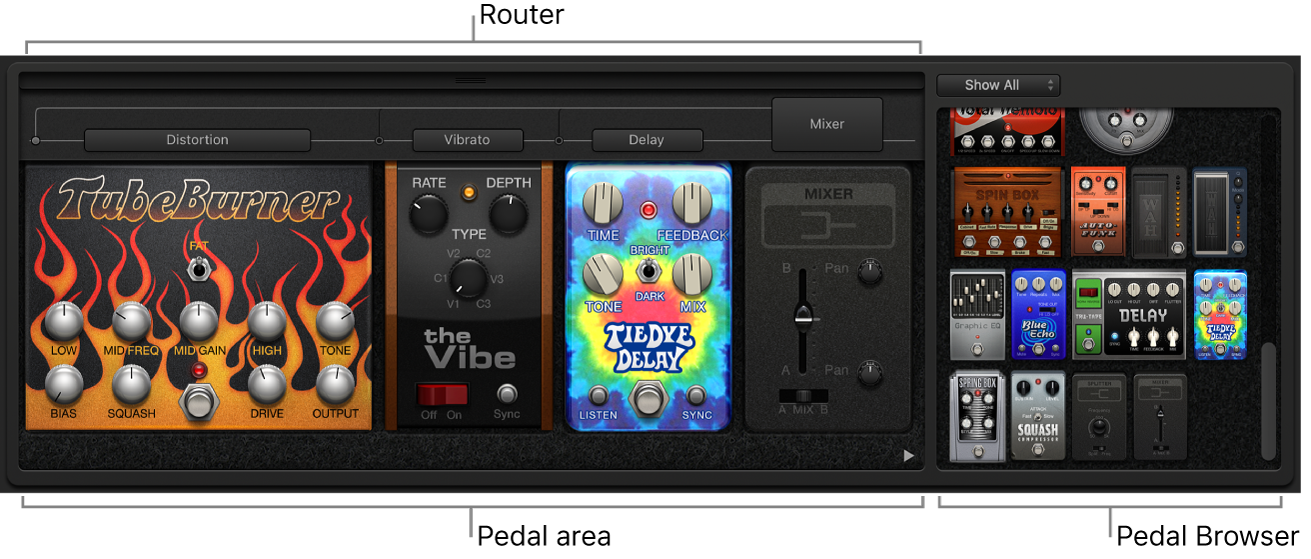GarageBand User Guide
- Welcome
-
- Play a lesson
- Choose the input source for your guitar
- Customise the lesson window
- See how well you played a lesson
- Measure your progress over time
- Slow down a lesson
- Change the mix of a lesson
- View full-page music notation
- View glossary topics
- Practise guitar chords
- Tune your guitar in a lesson
- Open lessons in the GarageBand window
- Get additional Learn to Play lessons
- If your lesson doesn’t finish downloading
- Touch Bar shortcuts
- Glossary

Intro to Pedalboard in GarageBand on Mac
Pedalboard simulates the sound of a number of famous “stompbox” pedal effects. You can process electric guitar, bass guitar and other tracks with a combination of stompboxes.
You can add, remove and reorder pedals. The signal flow runs from left to right in the Pedal area. The addition of two discrete busses, coupled with splitter and mixer units, lets you create custom pedal combinations.

Pedal Browser: Shows all pedal effects and utilities. These can be dragged into the Pedal area as part of the signal chain.
Pedal area: You can add, replace, reorder, and remove stompboxes here. You can also use stompbox controls to change your sound. See View and add pedals in GarageBand on Mac and Reorder and replace pedals in GarageBand on Mac.
Router: Used to control signal flow in the two effects busses (Bus A and Bus B) available in Pedalboard. See Control pedal routing in GarageBand on Mac.
Open the Pedalboard plugin
With the audio track selected, click the Smart Controls button
 in the control bar.
in the control bar.Click the Pedals button
 in the Smart Controls menu bar.
in the Smart Controls menu bar.Note: The Pedals button is available only if Pedalboard is inserted in the currently selected audio track.
You can also use the Pedalboard plugin on audio and software instrument tracks. For information about using effect plugins, see Add and edit effect plug-ins in GarageBand on Mac.